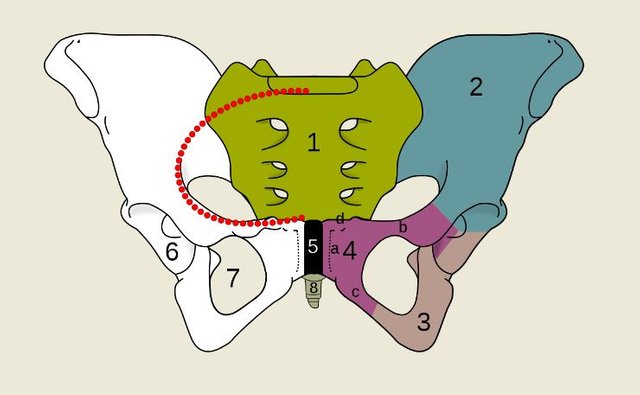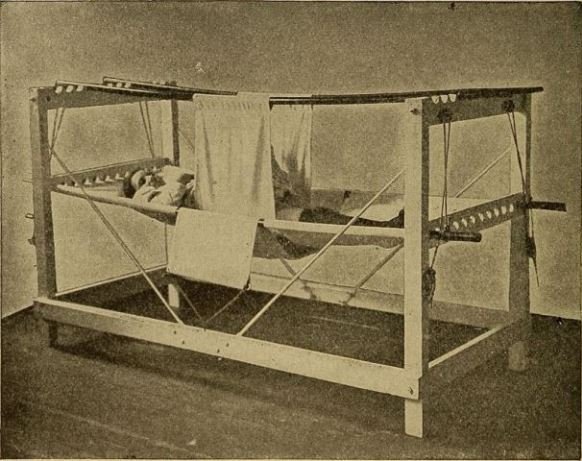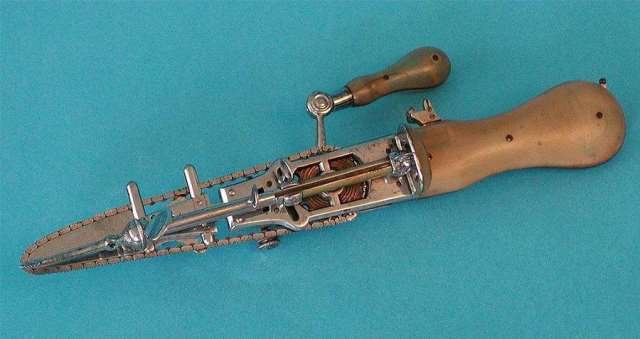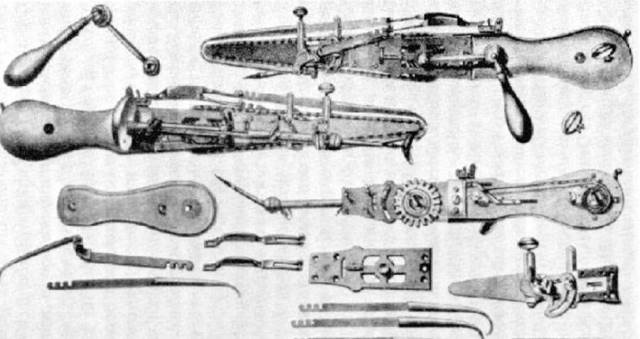The Chainsaw Was Originally Invented To Deliver Babies
Some of the great technological inventions of our time have some very amazing and bizarre history.
Let's take for instance a product like the ‘Treadmill’ which was initially invented as a tool for lifting heavy weights and was subsequently used for milling by animals and even prisoners; now it is a very important invention as of today.
Also we can look at the very popular and satisfying beverage drink, ‘Coca-cola’; which was initially invented as a medicinal syrup for health purposes; but today it is arguably the most famous beverage drink on the planet.
Several inventions in the distant past have evolved into very crucial and important tools in the present day, and we often tend to forget their historical journey from the time of development to our present day.
But then, history cannot easily be wiped out or erased. It would always be part of our technological and scientific evolution.
The Origin of the Chainsaw
Today, we are all very familiar with the Chainsaw. But what can we really say about the history of the Chainsaw?
Well, the very strong and powerful tool for sawing various items ranging from trees, woods, concrete, rocks or metals also has a very unique and amazing history, and the story behind the Chainsaw's origin is unique.
The Chainsaw and Symphysiotomy
The term Symphysiotomy might sound strange in terms of pronunciation, and its meaning, but it is a medical procedure that has been practice since the 16th century.
Way back in tie, the original chainsaw was designed specifically for Symphysiotomy. It was a method preferred by doctors at the time to quickly remove a baby from the woman’s womb, at moments when normal child delivery was difficult or dangerous.
The Symphysiotomy practice was carried out for almost three centuries, and the chainsaw was the preferred tool for it.
In other words, before the chainsaw became a weapon synonymous with violent killings, tool for cutting down trees or a repetitive feature of horror movies, the chainsaw was solely intended for medical use; specifically to aid childbirth.
Despite the fact that women had literarily been giving birth from time immemorial, childbirth as at the 18th century was still a messy scenario. Hospital and clinical hygiene was still not at its peak, anesthesia for the birthing mother was still not perfected, and the general hygiene of man as a whole was not what it is today.
Due to the non-standardized medical conditions and scientific knowledge at the time, when women in labour had complications, it was most certainly life-threatening. Also caesarean sections at the time, was still considered dangerous due to the high risk of infection. This led doctors to seek for alternative methods for the women, fi they could not give birth to a child naturally.
One of the alternative methods that the doctors came up with at the was the Symphysiotomy procedure.
The Symphysiotomy Procedure
The procedure was quite popular in 1597, and was the preferred procedure for birthing a child from the mother’s womb for about three centuries. Modern science and invention eventually made the practice obsolete and primitive.
When the time came for the procedure, doctors would use a knife to separate the cartilaginous muscle connecting the pubic symphysis of the pregnant mother, in order to widen the birth canal. In simple terms, the doctor would cut the pelvis of the woman in half.

However, in the mid-1780s, John Aiken and James Jeffrey, who were both Scottish doctors, realized that the process of using a knife for the Symphysiotomy was often inaccurate and time consuming, not to mention the excruciating pain for the woman. Hence, they created a device that would aid precision during cutting, for everyone, by using a chain mechanism that functioned via repetitive movements. And that was the concept that led to the development of the modern chainsaw.

At first, the chainsaw was made of serrated teeth with a long chain, a handle on each end of it, which was similar to a wire saw. They then used it by wrapping the chain around the pelvic bone of the woman, and a doctor would alternate the pulling of each handle. The alternating movement would then slice through the symphysis with more precision and faster than a knife.
Modification of the Chainsaw
With time and usage, an orthopaedist by name Bernhard Heine came up with an invention called an “Osteotome”. It was an improvement on the invention of Scottish doctors, John Aiken and James Jeffrey.

Heine’s chainsaw was powered by a hand crank as against the previously used ‘alternating pulling’, and the serrated chain was looped around a guiding blade which aid rotation of the blade. The modified chainsaw allowed doctors to hold it similarly to how a knife was used, but with much better precision via the serrated chain.

Following the popularity of the anesthesia around the same time, performing the symphysiotomy procedure using the chainsaw was now widely accepted. It also became widely used for other surgical procedures and dissections as well, due to its efficiency.
In Summary
As effective as the symphysiotomy procedure was, at the time, it began to lose support around the turn of the 18th century.
An improvement in general anesthesia and hospital hygiene eventually made caesarean sections safer, with less risk of complications and infections.
Doctors also realized obviously that recovering from a broken pelvis due to symphysiotomy took a lot longer, when compared to recovering from a few stitches from a C-section.
When it became apparent that the chainsaw was less useful for surgical procedures, a ‘logger’ based in San-Francisco in the U.S, realized that the chainsaw could be used in the felling of trees. The logger, using Heine’s original osteotome as a model created a modified chainsaw with an “endless-chain saw” mechanism and subsequently patented it in 1905.
Thankfully, the chainsaw was no longer used on humans; as other wood loggers and inventors modified and remodeled the chainsaw into the tool we now have today.
Reference: All-that-is-interesting, Symphysiotomy, Chainsaw
Further Reading: 1, 2, 3, 4, 5
Thank you for your time and for reading my post.
If you found this post interesting, then kindly UPVOTE, RESTEEM and FOLLOW @rickie, for more quality posts.

Interesting! Thank you for sharing.
Thank you for reading @amalinavia
Informative.
Thanks for sharing
Wow, I never knew this till now, great Nigerian u r
This post has received a 0.02 % upvote from @drotto thanks to: @steemstem-bot.
Well done! This post has received a 5.00 % upvote from @litasio thanks to: @steemstem-bot. Whoop!
If you would like to delegate to the @LitasIO you can do so by clicking on the following link: 10SP
You made an enormous deep research in bringing this up. I would never had thought chainsaw came about from surgical procedures.
Thanks @turpsy for reading. Yes, i really found the discovery to be amazing myself, so i thought to share.
Human life is a continuum. We are constantly evolving.
This article just emphasized how important it is for us to keep innovating .
The company producing the chain saw for hospital would have thought that acceptance of C-section in childbirth is the end of their products.
But hey, the wood industry is waiting on the same product - Endless chain saw.
Thanks @rickie for the post.
Wow! An amazing analogy @hpabiola. Thanks for sharing that. I do appreciate your reading the post.
You are welcome.
"Chainsaw" menas a lot if you watch horror movies :P
Yea, it does. A horror movie won't be complete without a chain-saw...lolzz
Thanks for reading @chelseanews